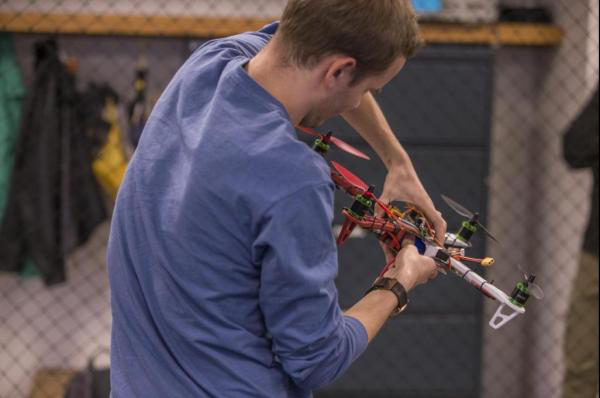[Abstract] U.S. universities use the "fuzzy logic" technology to command UAVs and let it land on mobile platforms successfully. Tencent Digital (An An) Scientists from the University of Cincinnati in the United States succeeded in landing a drone on a moving target. The researchers believe that the reason for the success of the experiment is mainly due to the use of "fuzzy logic" technology. To make a drone land on a moving target, it must be highly accurate. The drone must land in the designated area and the deviation cannot be too great. From a scientific and engineering point of view, it is quite difficult for a drone to land on a mobile platform. Accuracy is the most difficult problem to solve. "Fuzzy Logic" points the direction for researchers, and "fuzzy logic" makes use of rough and well-founded guesses. The “precision†requirement cannot have any error, fuzzy logic is not the same, it allows subtle differences, and the accuracy requirement is not so high. When combined with drone navigation algorithms, fuzzy logic becomes the logic of occurrence. The system can evolve continuously to provide the most useful solution. The researchers used new software to control drones landing on landing pads that were mounted on mobile robots. Researchers have developed their own fuzzy logic system called ALPHA. Some cutting-edge technologies can be adaptive thinking and have embedded deep learning techniques. Compared with these technologies, the University of Cincinnati has some advantages in its technology: the fuzzy occurrence logic can be extended, adaptable, and very robust. New technology can park drones on aircraft carriers. It is very important that the drone lands. There are many occasions in the real world that need to use this technology. For example, a drone matching the drone can deliver goods and then land automatically. Source: upi Wonderful video recommendations
A siren is a loud noise-making device. Civil defense sirens are mounted in fixed locations and used to warn of natural disasters or attacks. Sirens are used on emergency service vehicles such as ambulances, police cars, and fire trucks. There are two general types: pneumatic and electronic.
Many fire sirens (used for calling the volunteer fire fighters) serve double duty as tornado or civil defense sirens, alerting an entire community of impending danger. Most fire
sirens are either mounted on the roof of a fire station or on a pole
next to the fire station. Fire sirens can also be mounted on or near
government buildings, on tall structures such as water towers,
as well as in systems where several sirens are distributed around a
town for better sound coverage. Most fire sirens are single tone and
mechanically driven by electric motors with a rotor attached to the
shaft. Some newer sirens are electronically driven speakers.
Fire sirens are often called "fire whistles", "fire alarms", or
"fire horns". Although there is no standard signaling of fire sirens,
some utilize codes to inform firefighters of the location of the fire.
Civil defense sirens also used as fire sirens often can produce an
alternating "hi-lo" signal (similar to emergency vehicles in many
European countries) as the fire signal, or a slow wail (typically 3x) as
to not confuse the public with the standard civil defense signals of
alert (steady tone) and attack (fast wavering tone). Fire sirens are
often tested once a day at noon and are also called "noon sirens" or
"noon whistles".
The first emergency vehicles relied on a bell. Then in the 70s,
they switched to a duotone airhorn. Then in the 80s, that was overtaken
by an electronic wail.
Piezo Alarm,Siren And Alarm,Piezo Buzzer Siren,Piezo Buzzer Alarm Siren Jiangsu Huawha Electronices Co.,Ltd , https://www.hnbuzzer.com
August 16, 2022